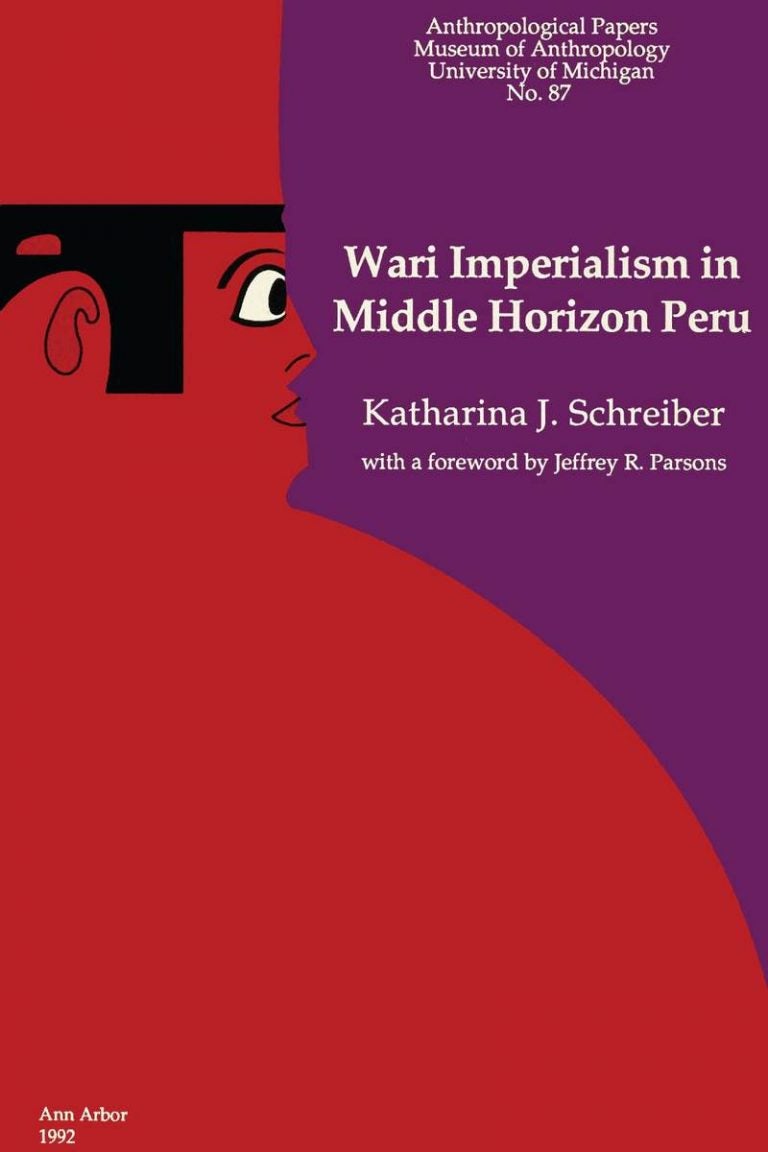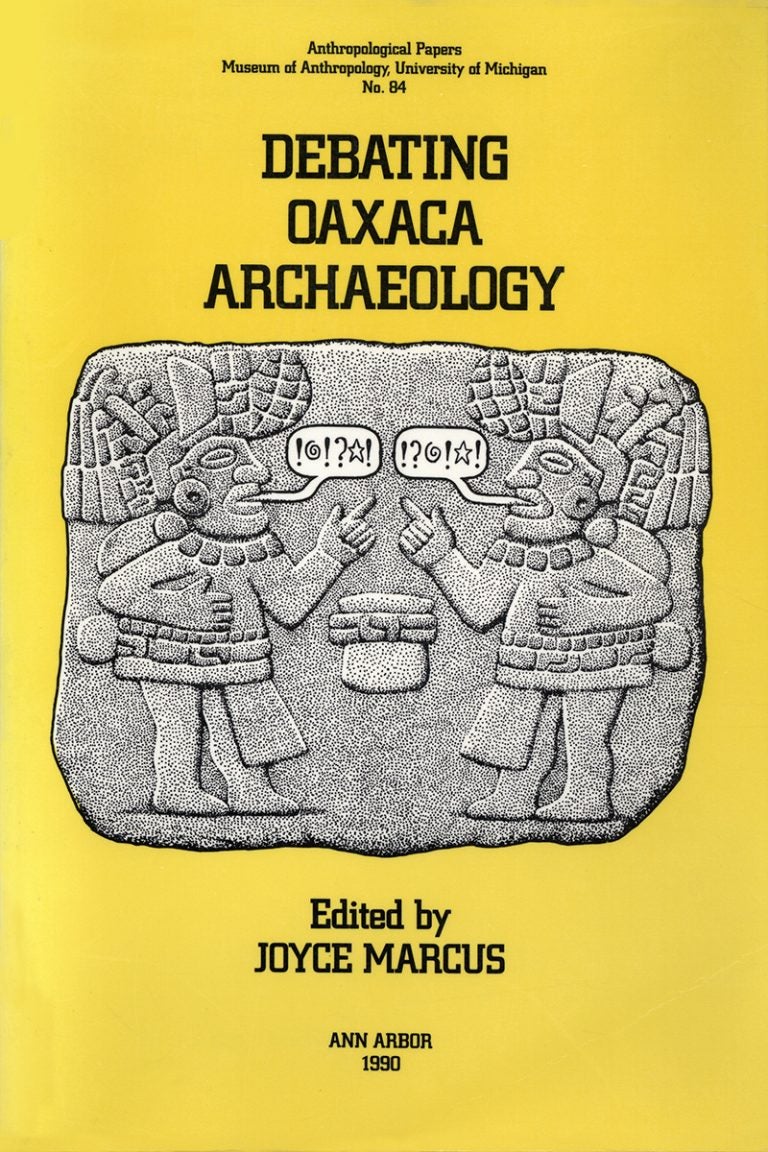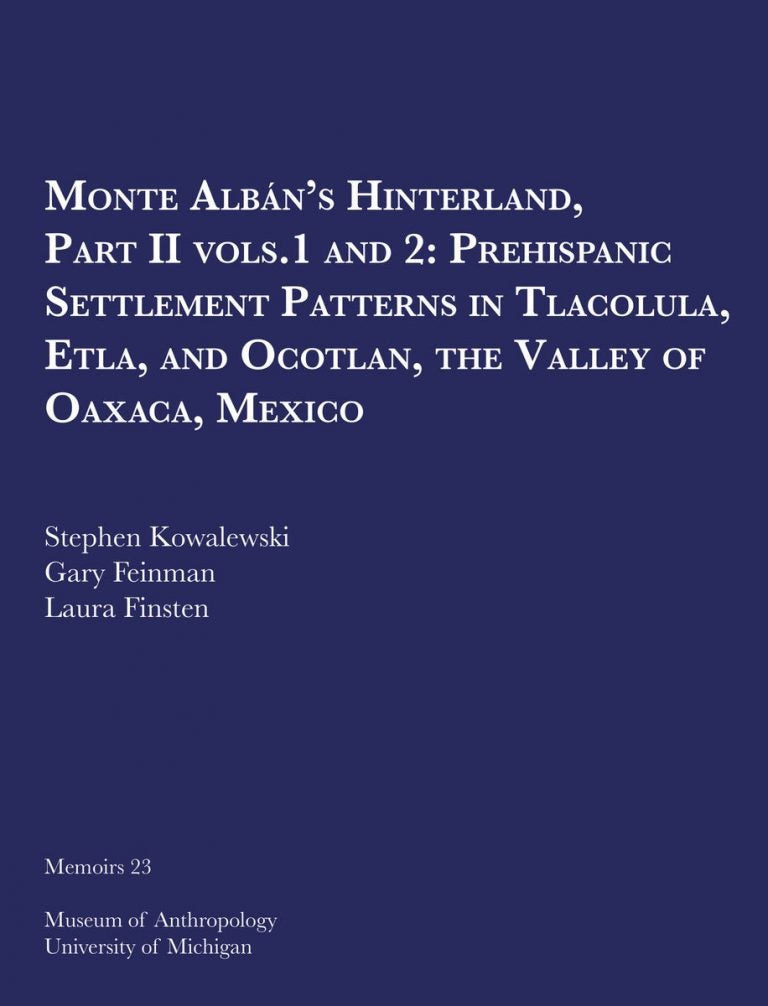Doug Jones
AP 90
In this fascinating study of five populations, author Doug Jones explores the possibility that hardwired into the human psyche are standards of beauty that are really preferences and signals for good health.
Museum of Anthropological Archaeology

In this fascinating study of five populations, author Doug Jones explores the possibility that hardwired into the human psyche are standards of beauty that are really preferences and signals for good health.

Presents new data on warfare from both ethnohistoric and ethnographic sources.

Using more than 300 illustrations, the authors present an encyclopedic analysis of the many types of pottery found in the Oaxaca Valley in the Early Formative period. From details of sherd profiles and tempers to discussions of the growth of various villages, this volume is an exhaustively thorough treatment of the topic and represents decades of archaeological fieldwork in the region.

The Deh Luran Plain is a microcosm of Mesopotamia and important for the study of a variety of processes in cultural evolution. In this volume (the first of three planned on this project), the authors present a detailed archaeological survey covering periods from the earliest occupation of the plain up to the mid-third millennium BC.

A volume of essays by Mesoamerican scholars on topics ranging from Zapotec archaeology to Cuicatec irrigation and Mixtec codices to Aztec ethnohistory. Authors use a direct historical approach, the comparative method, or develop models that contribute to ethnological and archaeological theory.

Preston Holder, a brilliant iconoclast, excavated these mounds in 1955. Decades later, the excavation still stands as one of the best-documented major excavations of the Cahokia area. This volume, meticulously researched and written, is the book Holder never completed. Pauketat also includes the massive research and theoretical developments that have emerged since 1957.

This illustrated monograph is an innovative analysis of forager archaeology in general and Paleo-Indian studies in particular. This is a companion volume to Thedford II: A Paleo-Indian Site in the Ausable River Watershed of Southwestern Ontario (Memoir 24).

This annotated bibliography reviews contributions from a wide variety of theoretical orientations, many from geographical or temporal contexts.

A detailed and profusely illustrated analysis of material recovered from this Early Paleo-Indian Parkhill site.

Renowned anthropologist Pierre Lemonnier presents a refreshing new look at the anthropology of technology: one that will be of great interest to ethnologists and archaeologists alike.

More than 600 years before the Inka empire ruled the Andean region of South American, during the period known as the Middle Horizon, there were two complex societies: the Tiwanaku and the Wari. In this volume, Katharina J. Schreiber explores the problem of the Middle Horizon through archaeological research in two specific areas: the Carhuarazo Valley and the Jincamocco site. Foreword by Jeffrey R. Parsons.

This book reports the results of an archaeological survey undertaken in southwestern Iran by a remarkable researcher: Dr. F.G.L. Gremliza. The author, Abbas Alizadeh, presents Gremliza’s survey data and provides an analysis of the developmental implications.

The authors present the constructs for a logical and hierarchal vertebrate coding system for use in the analysis of faunal remains from archaeological sites. FACS consists of a series of numeric codes for recording information on 24 attributes for each faunal specimen.

Robert C. Bailey reports on his observations of sixteen Efe Pygmy men in northeastern Zaire. Bailey lived and worked with the men and their families in the northern Ituri Forest from March 1980 to January 1982—his research was part of a multidisciplinary project called the Ituri Project. Bailey presents data on food production, subsistence behaviors, hunting techniques, relationships between hunters and village dwellers, and other aspects of the Efe society. Foreword by John D. Speth.

This volume contains the analysis of two prehistoric sites in Gratiot County, Michigan. The author presents a description of the features and artifacts from both sites and discusses the possible cultural affiliation of the sites, which he dates to the Terminal Archaic/Early Woodland.

The essays in this collection examine cultural evolution from diverse viewpoints. Topics include the evolution of complex societies in the tropics of South America, the role of prime movers in cultural evolution, and more.

The essays in this collection examine a variety of topics within Oaxacan archaeology, from settlement and land use to scale and complexity.

Grasshopper Pueblo is a large fourteenth-century community in the forested Mogollon highlands of central Arizona. This book is an examination of the entire suite of animal remains from the site.

The maguey plant plays a central role in cultural adaptation and cultural change in highland Mesoamerica. This book is a comprehensive study of the plant and its use. Includes chapters on maguey cultivation and pulque production, maguey fiber processing and spinning, and the archaeological implications of the available ethnographic and historic information about maguey utilization.

Excavations at the Bridgeport Township site (20SA620) revealed a wealth of information about the Saginaw Valley’s prehistoric inhabitants. For roughly 3,000 years, from about 1500 BC to about AD 1500, people used this site.

In this ethnographic study of the Agta, hunter-gatherers in the tropical rain forest of northeastern Luzon in the Philippines, Navin K. Rai documents a traditional society struggling to survive as their forest home is destroyed by outside forces. Foreword by Karl L. Hutterer.

This two-volume monograph is the final report and synthesis of the Valley of Oaxaca Settlement Pattern Project’s full-coverage surface survey and makes significant theoretical and methodological contributions to the investigation of social evolution, cultural ecology, and regional analysis.

Author Denise C. Hodges examines the osteological remains from 14 archaeological sites in the Valley of Oaxaca, Mexico, in an attempt to address the relationship between the intensification of agriculture and the health status of the prehistoric population. Volume 9 of the subseries Prehistory and Human Ecology of the Valley of Oaxaca.

Many archaeologists and ethnohistorians use historic documents to help interpret prehistoric archaeological sequences. A sixteenth-century Spanish document called Justicia 413 has been instrumental in helping researchers understand conflict among the prehistoric polities of coastal Peru. Volume 4 of the subseries Studies in Latin American Ethnohistory & Archaeology.

In this volume, the author reports on the excavation and interpretation of the Foxie Otter Site, a large archaeological site on Fox Lake in Ontario, Canada. This site, which was used by native people for about 7,000 years, contains one of the longest archaeological records in the Upper Great Lakes.